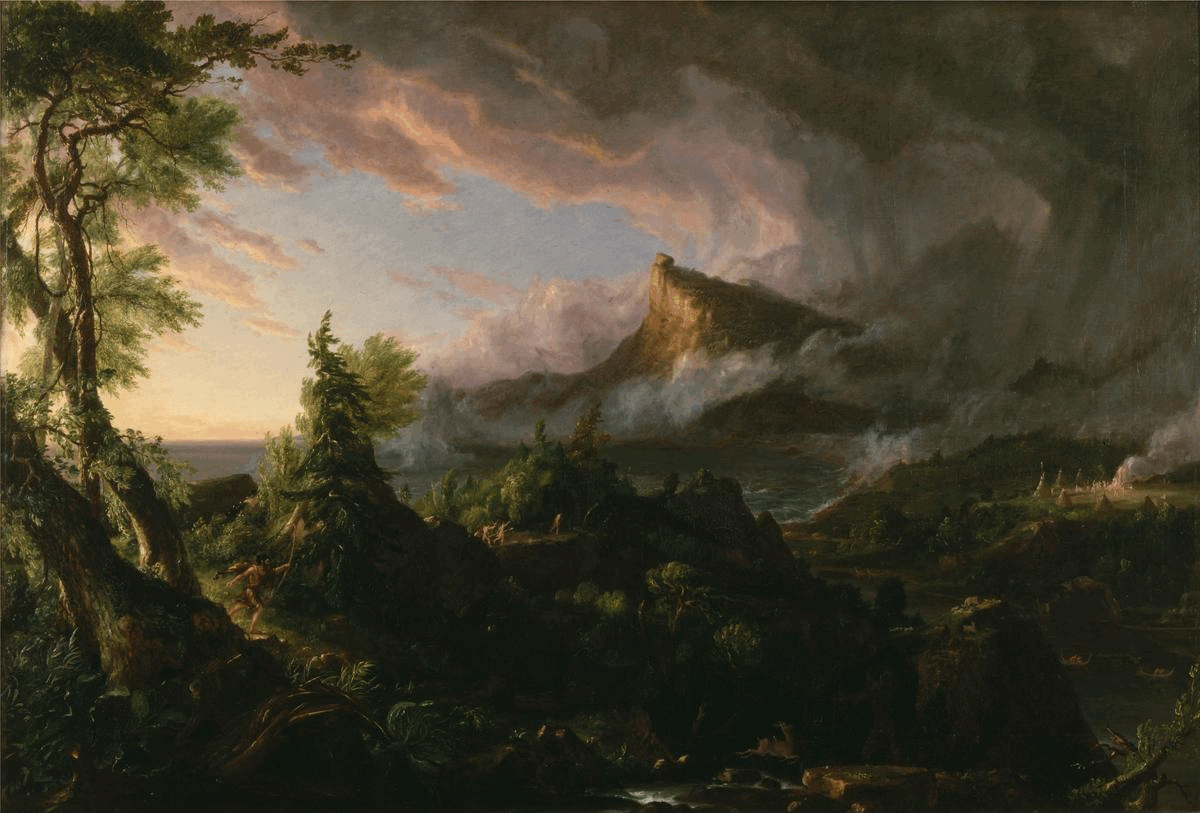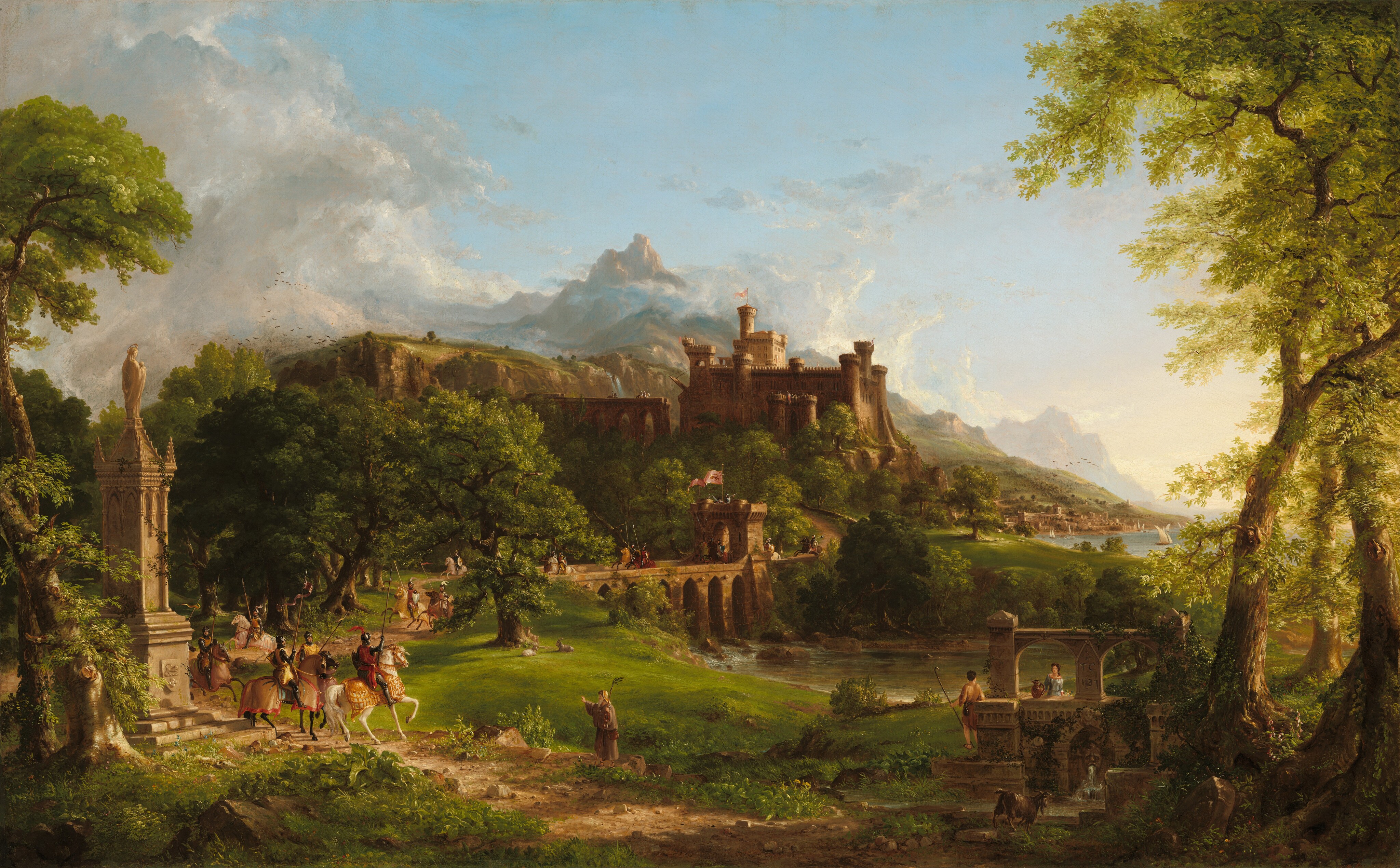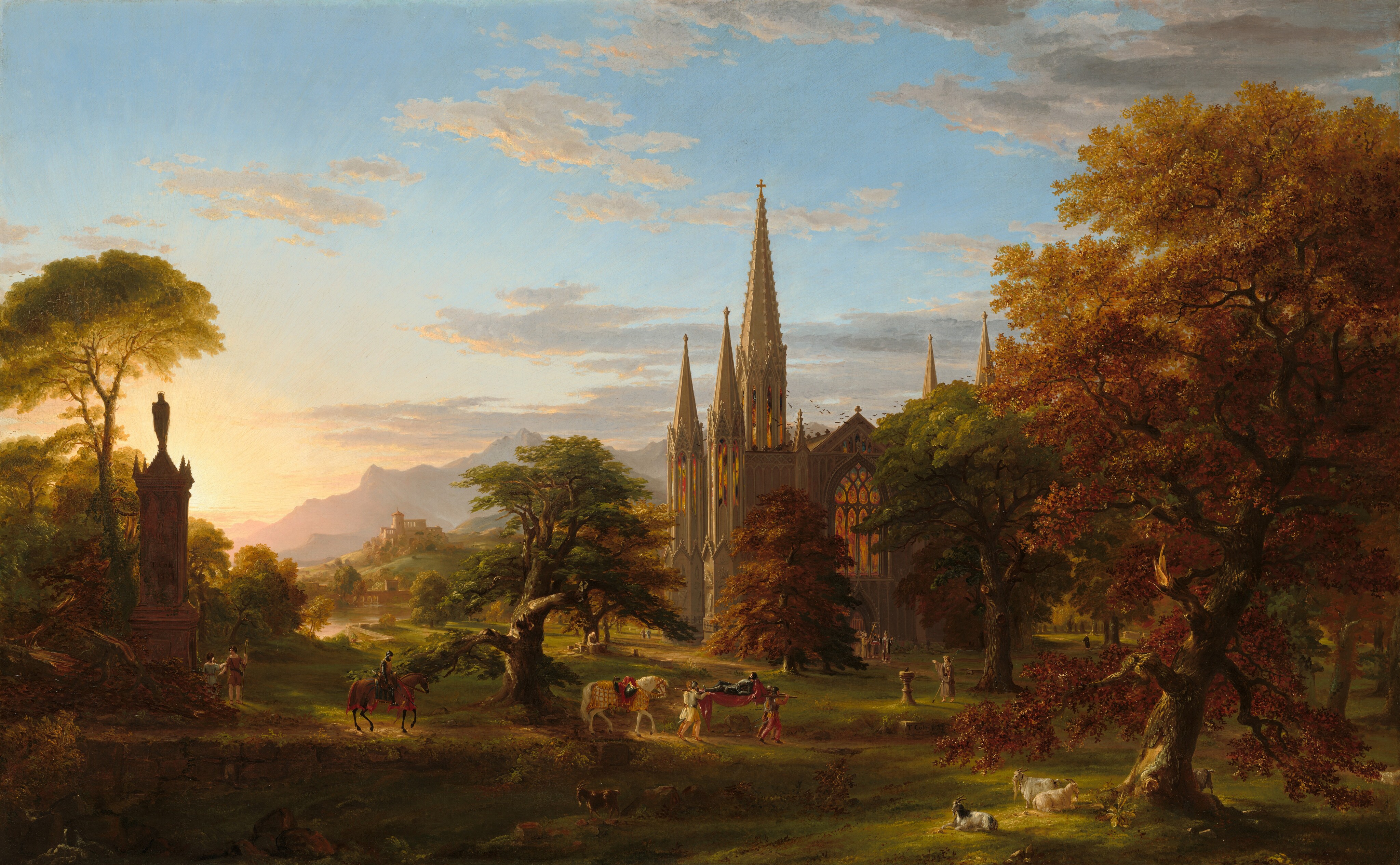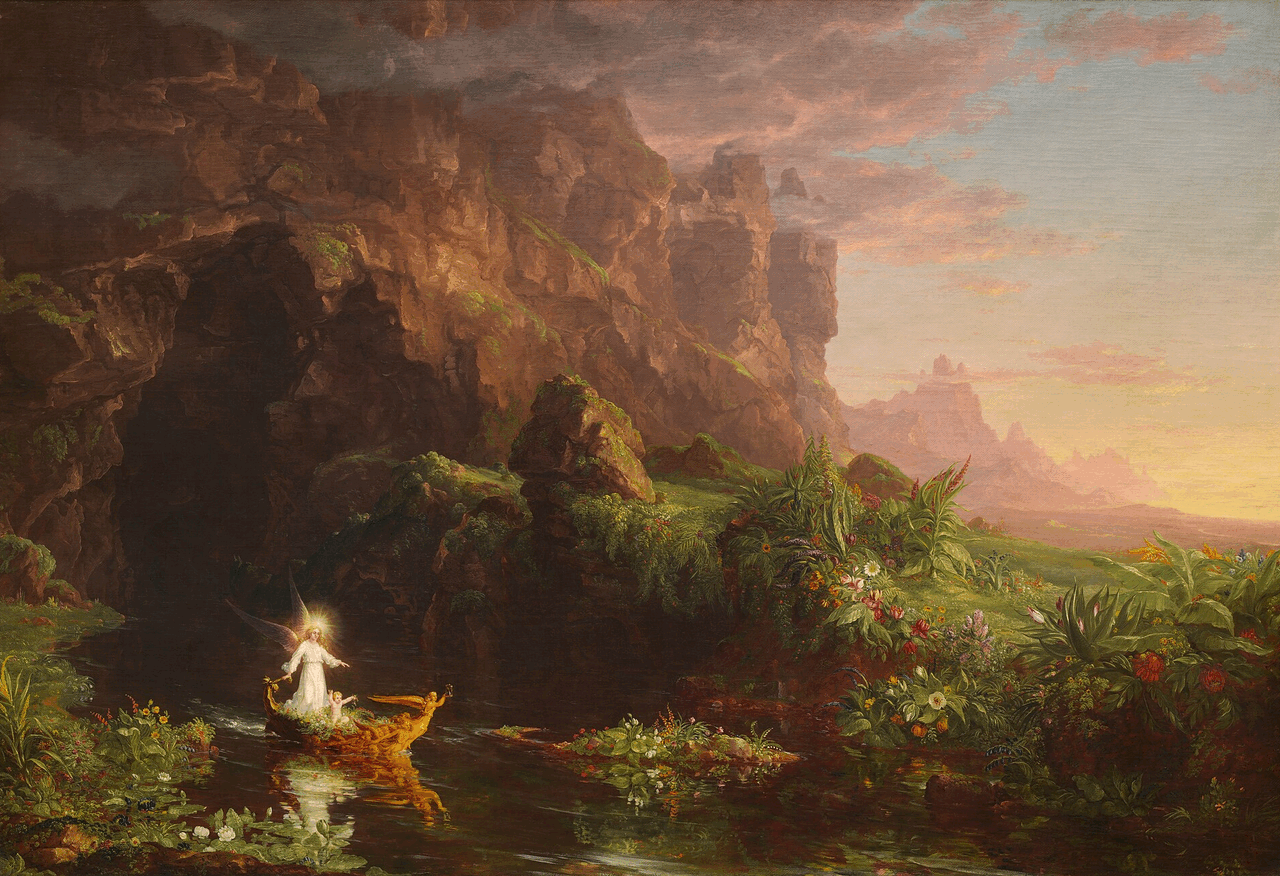Thomas Cole
Thomas Cole is one of my favorite artists. His pieces are amazing examples of Romantic artwork, alongside being good examples of the Hudson School and his landscapes mainly being of New York State. When you look at the above quote, I think you can also see that signature of the early US reflected in Cole’s works. A sense of yearning for what was and what will be, an idealization of nature, and knowledge of where we were, where we came from, which is almost unparalleled by a lot of modern works. I am especially a large fan of his sets, most of which I will detail here.
The Course of the Empire#
 This is one of my favorite works of his. It was initially intended to be a set of depictions for a patron to hang over his fireplace. He must have been one lucky man. The fourth image, Destruction, is by far one of the most famous. I’ve seen it numerous times when learning about the fall of the Roman Empire (this is definitely not Rome though). It shows the natural progression of an empire—savage to Arcadian to consummation (and the inevitable decadence)—which goes hand in hand. Additionally, it shows the weakness of any society to nature, following the mountain in the right of each image, a mountain which is unaffected by these temporary human whims. These paintings, I feel, are truly some of the most famous there are, and it is no wonder that these launched him into critical acclaim.
This is one of my favorite works of his. It was initially intended to be a set of depictions for a patron to hang over his fireplace. He must have been one lucky man. The fourth image, Destruction, is by far one of the most famous. I’ve seen it numerous times when learning about the fall of the Roman Empire (this is definitely not Rome though). It shows the natural progression of an empire—savage to Arcadian to consummation (and the inevitable decadence)—which goes hand in hand. Additionally, it shows the weakness of any society to nature, following the mountain in the right of each image, a mountain which is unaffected by these temporary human whims. These paintings, I feel, are truly some of the most famous there are, and it is no wonder that these launched him into critical acclaim.
Thomas Cole was one of the creators of our national culture, one of the people who really gave America its own unique character, brought it from a conglomeration of states into a nation. And I feel that images like this especially helped, through portraying an idealistic American life—one in a log cabin (like Lincoln, later) with a family and plenty of land. We can again see those landscapes in the back too, drawing off the beauty of the Northeast to strengthen this new nation, to make it its own. You can see the self-sufficiency of the family, akin to the self-sufficiency of America as a whole. This image, like most of his, just has that je ne sais pas quoi. It just hits differently.
The Departure and The Return#

 These are another great example of his polyptychs. You see these knights set off, looking up, their horses looking up, the world basking in spring/summer, warm, everyone exuberant, galloping. And then, of the around 15 who depart, in autumn, the trees yellow, two return, trotting, one wounded. Similar to the next polyptych, I feel this is a good example of a folly of life, but one which will and does always happen, one which I don’t find it within me to truly condemn. That being a lust for war, as Hamilton put it succinctly, “I am either gonna die on the battlefield in glory or rise up.” People fantasize—and I’m not excluding myself from this—of war. And I just appreciate how this polyptych expands that.
These are another great example of his polyptychs. You see these knights set off, looking up, their horses looking up, the world basking in spring/summer, warm, everyone exuberant, galloping. And then, of the around 15 who depart, in autumn, the trees yellow, two return, trotting, one wounded. Similar to the next polyptych, I feel this is a good example of a folly of life, but one which will and does always happen, one which I don’t find it within me to truly condemn. That being a lust for war, as Hamilton put it succinctly, “I am either gonna die on the battlefield in glory or rise up.” People fantasize—and I’m not excluding myself from this—of war. And I just appreciate how this polyptych expands that.
The Voyage of Life#
 I feel this is another good coming-of-age polyptych from Thomas Cole. It does an astute job of portraying a baby’s to an old man’s life. From his serene birth going down the river, to his youth doubling back, his angel waving goodbye to him and him not looking back, looking at the mirage in the background, to having to double back, entering the rapids, the storms, coming by the same rock he was hewn from, before coming to an end by a great ocean, to be led into the heavens. I don’t have too much to say—I just really like this set.
I feel this is another good coming-of-age polyptych from Thomas Cole. It does an astute job of portraying a baby’s to an old man’s life. From his serene birth going down the river, to his youth doubling back, his angel waving goodbye to him and him not looking back, looking at the mirage in the background, to having to double back, entering the rapids, the storms, coming by the same rock he was hewn from, before coming to an end by a great ocean, to be led into the heavens. I don’t have too much to say—I just really like this set.
These are really the main ones I’d like to show (not all the ones I like, just some good samples), but I highly, highly encourage everyone to check out his other works. Wikipedia has a good collection of them hosted online. They’re excellent.
This post was made as part of the Agora Road Travelogue!